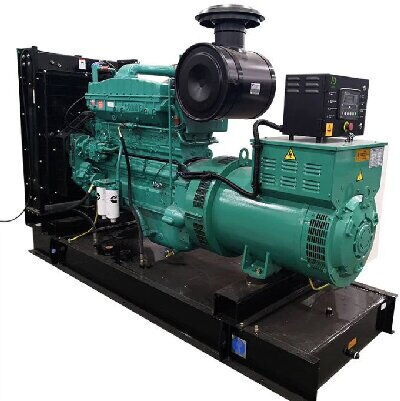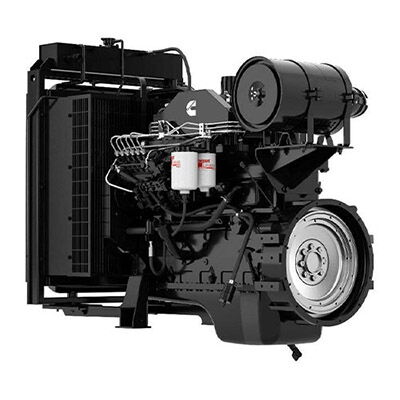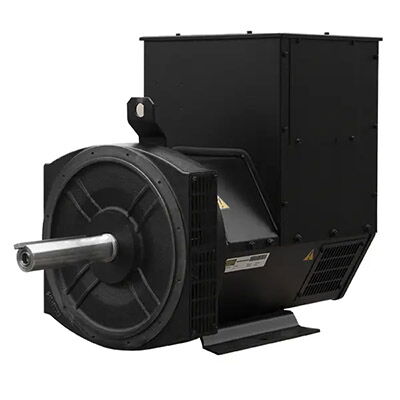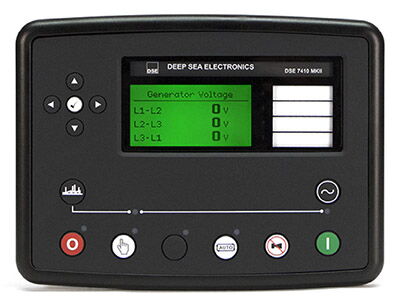Diesel generator sets are critical components in modern power supply systems and emergency backup power solutions. They convert the chemical energy in diesel fuel into mechanical energy via a diesel engine, which then drives an alternating current (AC) generator to convert mechanical energy into electrical energy. Diesel generator sets are widely used across industries such as industrial, commercial, medical, telecommunications, and emergency sectors, particularly for providing reliable power during grid failures or load fluctuations.

The diesel engine is the heart of a diesel generator set, responsible for converting diesel fuel into mechanical energy, which drives the generator to produce electricity. The design and configuration of the engine vary depending on the required power and application needs, with engine size and output power being directly proportional. The following are some of its main components.

The lubrication system consists of an oil pump and oil filter, primarily ensuring that the engine's moving parts are lubricated to reduce friction, minimize wear, and ensure smooth operation. The circulation of the lubricating oil stabilizes the engine's internal temperature and extends its lifespan.
The fuel system includes components such as fuel injectors, pipes, and fuel injection pumps, responsible for delivering diesel fuel at high pressure into the combustion chamber. The fuel mixes with air and ignites to release energy. Precise fuel control is critical for ensuring engine efficiency and emissions control.
A turbocharger increases the air pressure, thereby boosting the amount of oxygen available for combustion, improving engine power output. It plays a crucial role in enhancing engine efficiency and performance by allowing higher power production within the same engine volume.
The electrical system includes the starter motor, AC generator, and battery. It provides the necessary power to start the engine and ensures the generator operates correctly. The starter motor provides the required torque during engine startup, while the battery stores electrical energy during operation to support system functionality.
The cooling system maintains the engine at an optimal operating temperature by circulating coolant, preventing overheating. It protects the engine from heat damage and helps maintain the lubricating properties of the oil, ensuring efficient engine performance.
In addition to the major systems mentioned above, the diesel engine includes components such as the exhaust system, pistons, crankshaft, engine block, air filters, and flywheel. The exhaust system expels waste gases from combustion, while the pistons and crankshaft transmit and absorb mechanical energy during combustion.
The AC generator is a vital component of the diesel generator set, responsible for converting mechanical energy from the engine into electrical energy, providing a stable power output for equipment. The generator produces alternating current by rotating the electromagnetic rotor within the stator's copper windings. In the following parts, we have listed some of the main parts of AC generator.

The regulator monitors the generator's output voltage and distributes power to the battery and load. It ensures the generator operates within a stable voltage range, preventing damage to equipment from excessive or insufficient voltage.
The rectifier converts alternating current (AC) to direct current (DC), charging the battery and providing power. It acts as a bridge between the generator and the battery, ensuring the current meets various electrical needs.
The rotor is the rotating electromagnet in the generator that generates electricity by interacting with the copper windings in the stator. The speed of the rotor and the strength of the magnetic field directly influence the voltage and current production.
Other essential parts of the AC generator include slip rings, stator, pulley, drive end bearings, and slip ring end bearings. These components work together to ensure the stable operation of the generator.
Regular inspection of the AC generator is essential. Issues such as overheating, burning odors, frequent short circuits, or condensation may indicate a fault, requiring immediate repair to prevent system downtime.
The control panel is the operational and monitoring center of the diesel generator set, providing vital information about the generator's operating status, voltage, current, frequency, and more. It allows users to easily operate, monitor, and manage the generator's performance, facilitating prompt detection of potential issues and troubleshooting.

Voltage and Current Monitoring: The control panel displays real-time parameters such as voltage, current, and frequency, ensuring the generator operates within safe limits.
Automatic Transfer Switch (ATS) Panel: Often integrated with an ATS, the control panel enables automatic startup of the generator during power interruptions, ensuring continuous power supply.
Start and Stop Functionality: The control panel allows for starting and stopping the generator, with both automatic and manual operation modes.
Circuit Breaker: The circuit breaker is a critical component of the control panel, interrupting the current flow during short circuits or overload conditions to prevent equipment damage.
Current Transformer: The current transformer reduces the high output current of the generator to a manageable level, enabling safe monitoring and control.
Control Modules and Terminal Rails: The control module processes signals and controls system operations, while terminal rails provide access points for connecting components.
A diesel generator set is a complex mechanical and electrical system, with essential components including the diesel engine, AC generator, and control panel. Each part plays a crucial role in ensuring the efficient, stable, and safe operation of the generator. Through regular maintenance and proper management, a diesel generator set can reliably provide power under various conditions, meeting the electrical needs of diverse sectors.

